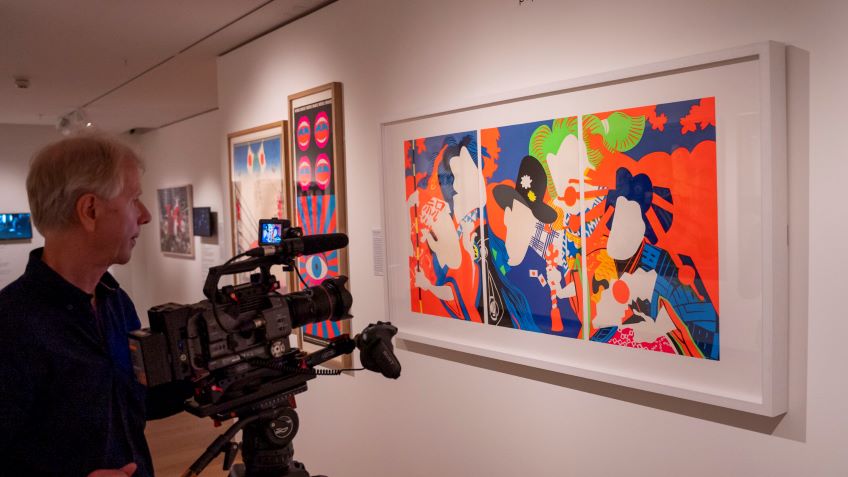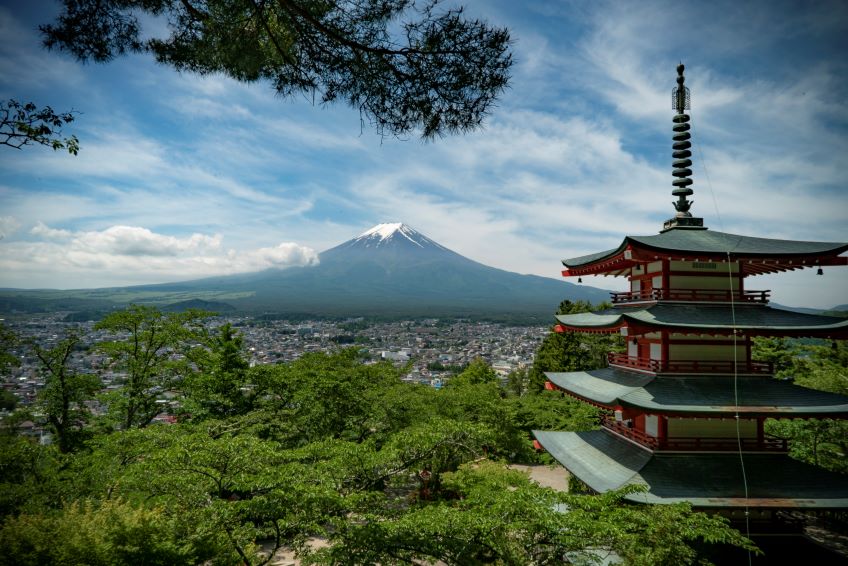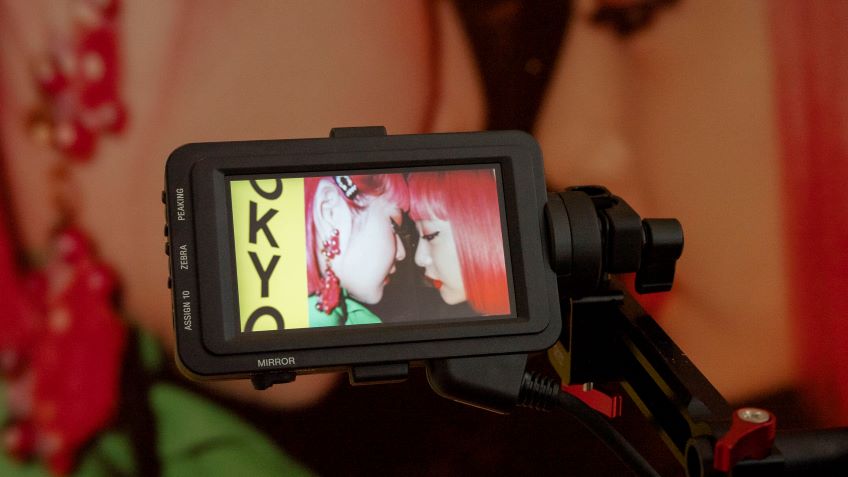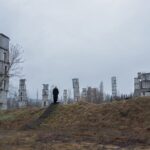Joyce Glasser reviews Exhibition on Screen: Tokyo Stories (May 23, 2023) Cert 15, 90 mins. In cinemas
Unlike the Vermeer exhibition which everyone knew about, the Ashmolean Museum’s exhibition Tokyo Stories (29 July 2021 – 3 January 2022), mounted to coincide with the Tokyo Olympics was in part obscured by the lingering uncertainty about Covid. For those who missed it, Exhibition on Screen has once again come to the rescue, but you might be kicking yourself, as this show was a real eye-opener.
Despite getting off to a rocky start with a monologue drowned out by the music and a deluge of unfocussed comments by unidentified talking heads, we finally arrive at a coherent starting point with Ashmolean Director Alexander Sturgis telling us that the museum has “one of the great collections of Japanese art in the world.” Who knew?
We can relax as we gain our bearings: the exhibition covers the period from the 17th Century to the present day, through the lens of the ever-changing face of Tokyo. Sigh of relief. History is important in all art, but especially here, so it is worth being reminded that the Edo period began in 1603 and lasted until 1867.
Most of us know about this period if only from seeing exhibitions of Katsushika Hokusai (100 Views of Mt Fuji, The Great Wave off Kanagawa), Ichiyūsai Hiroshige (Rain Shower at Shōno) the films of Kurosawa, and The Last Samurai starring Tom Cruise, which focuses on the opening up of Japan during the Meiji Revolution.

Despite the importance of history, the exhibition is not arranged chronologically but arranged thematically, with the film captioning the various themes. It works brilliantly because the juxtapositions enable us to see how the 20th and 21st century artists transform the tradition that they grew up with and that is all around them in the visually stimulating city of Tokyo.
Along with generous interviews with Japanese artists who explain their works in the context of history or of the city, various experts, such as Clare Pollard, the Curator of Japanese Art at the Museum, and Lena Fritsch, the Curator of Modern and Contemporary Art, fill us in on the history and legends that are vital to understanding the art. They also provide a brief history of Tokyo itself, which was called Edo (estuary) when it corresponded to the period of the Shogunate.
Ukiyo-e is a broad genre of Japanese art which characterises the art of the Edo period. Artists, most famously, Hokusai and Hiroshige, produced woodblock prints and paintings of recognisable landscapes, folk tales and scenes from history as well as idealised female beauties, kabuki actors, and sumo wrestlers. The woodblocks were typically a group effort, with a publisher commissioning an artist who then gave his design to an engraver who would then pass it on to a printer. These works were immensely popular and very affordable.
Next to some examples of Hiroshige’s cityscapes (100 Views of Edo) Pollard has cleverly placed examples of Yamaguchi Akira’s 100 Views of Tokyo which pay homage to the great tradition and skill of Hiroshige, while exploring contemporary possibilities with humour. Akira is known for “mining the past to find new gold.”
When Imperial rule was restored to Japan under Emperor Meiji, Japan opened its doors to the west after centuries of isolationism. Japanese art flooded the western market and influenced the art of Van Gogh, Whistler, Manet, Mary Cassatt and Gauguin. But Japan was also influenced by western art, and there began an exchange of paintings and prints, with artists like Pissarro, Cassatt and Degas becoming proficient printmakers. Art schools were a new concept in Japan as was the Nude and portraiture, with real people replacing character types.

A division arose between Yōga or Western style painting (using oil on canvas and watercolours and Western subjects and techniques) and Nihonga or traditional style art, but the lines became blurred, often intentionally. Even today this tension is used as a means of artistic expression by contemporary artists, such as Oshio Shinohara (now 91) whose mother was a Nihonga painter and doll maker.
Playing with the continuity of tradition from “courtesan” prints in the late Edo period and a traditional celebration of “Hinamatsuri” or a doll festival for girls, Shinohara’s Doll Festival of 1966 is reminiscent of the traditional Ukiyo-e. But he turns this into pop-art by using neon colours and grouping the silhouettes of kabuki actors and a high ranking courtesan with a figure wearing a western cowboy hat.
Destruction and renewal is a major and wide-reaching theme. Tokyo is a city that has been destroyed by earthquakes (The Catfish legend and art described in the film was a reaction to the 1855 Edo earthquake) and war and rebuilt so that it is ever changing. But the trauma of WWII was as significant to artists growing up in the 1940s as it was for German artists like Gerhard Richter and Anselm Kiefer.
A long segment is given over to pop artist Keiichi Tanaami who was nine when Tokyo was subjected to daily bombing and charred bodies lay on the streets. There was no cinema, television or food, just war and its aftermath, occupation. But he credits his obsession with Manga with saving him from the hardships of his childhood. From the 1960s that Manga became psychedelic, lewd, kitschy “collages of [his] childhood” notably filled with American airplanes. During the Vietnam War his “No More War” posters, with a Japanese touch, earned international acclaim.
After the war this decimated country became a powerhouse in the development of photographic equipment and photography enters the culture through the technology. Innovative photographer Eikoh Hosoe does not so much capture, as alter reality to redefine a language and express himself through theatrical compositions.
Women photographers and artists are not forgotten. A long segment is given over to the conceptual artist Mohri Yuko who is interested in “hidden creativity”. With humour and profundity, her fieldwork and installation work, Moré Moré Tokyo or Leaky Tokyo, focuses on how reactions to leaks in the underground caused by earthquakes and drainage – a solitary bucket and plastic conduit, or the accidental colours of emergency signage – become art unique to Tokyo. This film review cannot do justice to the exhibition, but the film comes very close.




